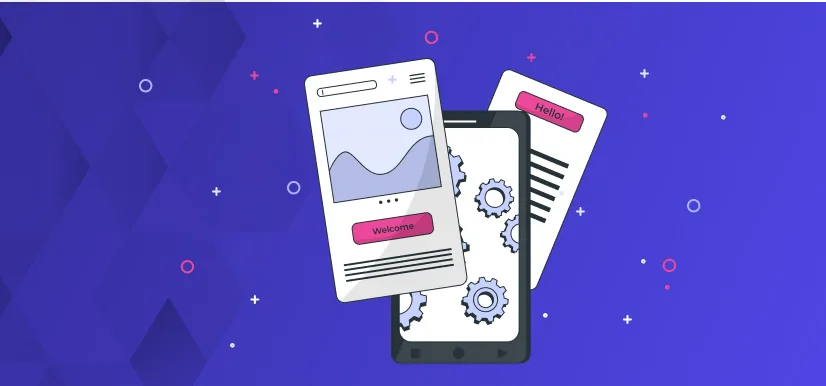- Personalization,
- Segmentation
The Role of Behavioral Segmentation in Personalization


In an age where customers are bombarded with countless marketing messages every day, standing out from the crowd has never been more important. Personalization is no longer a luxury but a necessity in today's hyper-competitive business environment. It's the secret ingredient that can make your brand memorable, and your customers feel valued.
But how do you achieve true personalization?
The answer lies in understanding your customers at a deeper level, and this is where behavioral segmentation comes into play.
Behavioral segmentation is a powerful strategy that allows businesses to divide their customers based on their behavior - their buying patterns, product usage, spending habits, and more. By grouping customers based on their actions, companies can tailor their offerings, messaging, and services to meet individual needs and preferences, taking personalization to a whole new level.
The benefits of this approach are immense. When you personalize your customer's experience based on their unique behaviors, you not only boost customer satisfaction but also increase conversions and foster loyalty. You're essentially hitting the trifecta of successful customer relationship management.
In this blog post, we'll dive deep into the world of behavioral segmentation and its pivotal role in personalization. We'll explore its key components, its implementation in your personalization strategy, and real-life examples of companies reaping its benefits. We will also discuss the challenges faced during its implementation and how to overcome them.
The Intersection of Behavioral Segmentation and Personalization
Behavioral segmentation is the bedrock of personalization. By understanding what customers do, businesses can predict what they might do next or what they might like. This knowledge allows for a tailored approach to marketing that resonates with individual customers, providing them with relevant content, products, and services.
For instance, a customer who frequently purchases baby products may appreciate personalized content about parenting tips or baby care, while a customer who regularly buys fitness equipment might be interested in workout routines or healthy recipes.
There are several types of behavioral data, each providing unique insights that help in crafting a personalized marketing strategy.
Purchasing Behavior: This involves segmenting customers based on their buying behavior, such as first-time buyers, “bargain hunters,” or loyal customers.
Usage Rate: Customers can be segmented into light, medium, or heavy users. For instance, a streaming service might offer personalized recommendations to heavy users, while light users might receive prompts to engage more with the service.
Occasion or Timing: This segmentation is based on specific occasions or times when a customer purchases or uses a product. For example, offering special birthday discounts or holiday promotions.
Customer Journey Stage: Customers at different stages of the journey, from awareness to consideration to purchase, require different types of content and communication.
Marketers can leverage behavioral data to personalize website content, enhancing the user experience and boosting conversions. For instance:
Displaying related products based on browsing history
Offering personalized discounts to frequent shoppers
Tailoring homepage banners based on past purchases or interactions
In essence, behavioral segmentation provides valuable insights into customer behavior, allowing marketers to deliver personalized experiences that resonate with each customer.
It's not just about selling a product; it's about building relationships, fostering loyalty, and creating memorable experiences, one customer at a time.
Benefits of Using Behavioral Segmentation for Personalization
Improved Customer Engagement
Behavioral segmentation allows you to reach out to customers at critical points in their journey with personalized content, thereby enhancing customer engagement.
By understanding your customer's behavior, you can anticipate their needs and provide relevant content or offers that capture their interest. This not only increases engagement but also accelerates the movement of customers through the sales funnel.
Boost in Conversion Rates
By segmenting customers based on their behaviors, you can deliver more personalized and relevant experiences, which often leads to higher conversion rates.
For example, a customer who has been browsing a particular product category on your website might be more likely to make a purchase if they receive a targeted promotion for that category.
Increased Customer Loyalty and Retention
Behavioral segmentation also plays a crucial role in fostering customer loyalty and retention.
When customers receive personalized content and offers based on their specific behaviors and preferences, they're more likely to feel valued and understood by your brand. This can strengthen their connection to your brand, increase their likelihood of repeat purchases, and encourage long-term loyalty.
However, while behavioral segmentation offers numerous benefits, it's also important to be aware of potential challenges. Overreliance on segmentation can result in overlooking other important factors that could impact customer behavior. Therefore, it's crucial to use behavioral segmentation as one element of a comprehensive, multi-faceted marketing strategy.
In conclusion, behavioral segmentation is a powerful tool for personalizing your marketing efforts, improving customer engagement, boosting conversion rates, and fostering customer loyalty. By understanding and responding to your customers' behaviors, you can create a more meaningful and effective marketing strategy.
Challenges and How to Overcome Them
As promising as behavioral segmentation and personalization are, implementing them in a business setting is not without its challenges.
However, understanding these obstacles and knowing how to tackle them can pave the way for a smoother integration of these strategies into your marketing efforts.
Common Obstacles Businesses Face
Data Collection and Analysis: One of the main challenges of using behavioral segmentation is the requirement of extensive data collection and analysis. Businesses need to gather and process information about their customers' actions, preferences, and loyalty, as well as their demographic, geographic, and psychographic characteristics.
Overreliance on Segmentation: While segmentation helps understand customers and their buying patterns, relying too much on it can lead to overlooking other important factors that could impact customer behavior.
The Complexity of Implementation: Behavioral segmentation can be more challenging to implement as it requires more complex data than demographic segmentation.
Tips and Strategies to Overcome These Challenges
Leverage the Right Tools: Utilize advanced analytics tools and software to simplify the data collection and analysis process. This can help businesses manage large volumes of data and derive meaningful insights from it.
Balanced Approach: While segmentation is vital, it's important to balance it with other marketing strategies. Consider all factors that could potentially influence customer behavior, such as market trends and competitive landscape.
Training and Expertise: Ensure your team has the right training and expertise to handle the complexity of implementing behavioral segmentation. This might involve investing in skills development or hiring external experts.
Test and Optimize: Regularly test and optimize your behavioral segmentation strategy. This will ensure that your approach remains effective and relevant as your customer base and market conditions evolve.
In conclusion, while there are challenges in implementing behavioral segmentation and personalization, they are not insurmountable. With the right strategies and resources, businesses can successfully leverage these techniques to enhance their marketing efforts and build stronger relationships with their customers.
Implementing Behavioral Segmentation in Your Personalization Strategy
Effective implementation of behavioral segmentation in your personalization strategy can significantly enhance your marketing efforts. Here's a step-by-step guide to help you incorporate this approach:
Data Collection: The first step involves gathering data about your customers' behaviors. This could include their purchasing habits, product usage, interaction with your brand, and more. Use analytics tools to track and collect this data.
Segmentation: Analyze the collected data to identify patterns and group customers based on their behaviors. Common segments could be based on purchasing behavior, usage rate, occasion or timing, and customer journey stage.
Personalization: Use the insights from the segmentation process to personalize your marketing efforts. This could involve tailoring your messaging, offering relevant content, or providing personalized discounts and offers.
Evaluation: Regularly assess the effectiveness of your personalization strategy. Use key performance indicators (KPIs) like conversion rates, customer engagement, and customer retention to measure success.
Optimization: Based on your evaluation, make necessary adjustments to your strategy. This might involve refining your segments, altering your personalization tactics, or collecting additional data.
The Future of Behavioral Segmentation and Personalization
The landscape of marketing is increasingly shifting towards personalization, with behavioral segmentation playing a pivotal role. As we look towards the future, several trends and predictions are emerging that businesses should be aware of.
Emerging Trends and Predictions
Artificial Intelligence: AI and ML are set to revolutionize behavioral segmentation and personalization. They can analyze vast amounts of data at an unprecedented speed, uncovering patterns and insights that can be used to deliver hyper-personalized experiences. AI's moment has truly arrived in the field of behavioral segmentation.
Predictive Personalization: With advancements in technology, businesses will be able to predict future customer behaviors based on historical behavioral patterns. This will allow them to anticipate customer needs and preferences, offering personalized experiences even before the customer realizes they need or want something (source).
Micro-Segmentation: The future of personalization lies in micro-segmentation, which involves segmenting customers into even smaller groups based on specific behaviors and characteristics. This allows for more precise targeting and personalization, leading to improved customer engagement and conversion rates (source).
Adapting to These Changes
Businesses must stay ahead of the curve to adapt to these changes effectively. Here are some strategies:
Invest in Technology: Businesses should invest in advanced analytics tools, AI, and ML technologies to gather, analyze, and utilize customer behavior data effectively.
Develop Skills: It's crucial for businesses to develop the skills necessary to use these new technologies and strategies. This might involve training current staff or hiring new employees with expertise in these areas.
Test and Learn: As these are emerging trends, it's important for businesses to adopt a test-and-learn approach. Experiment with different strategies, measure the results, and refine your approach based on what works best.
In conclusion, the future of behavioral segmentation and personalization is promising. By staying abreast of these trends and adapting accordingly, businesses can continue to deliver personalized experiences that resonate with their customers and drive business success.
Learn how to deliver unique and personalized customer experiences to increase conversions

